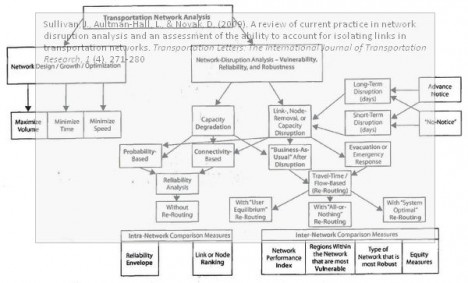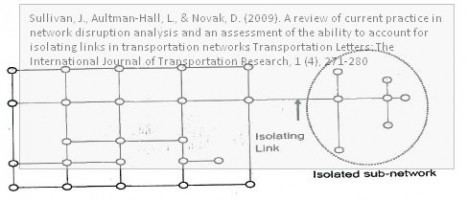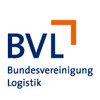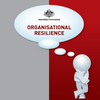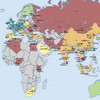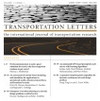 Today is my last day at work as Researcher at Møreforsking Molde. It is a sad day, because I am leaving a very exciting field, namely supply chain risk, but also a joyous day, because I am returning to a field I left 5 years ago, namely transport vulnerability. From here I head off into a new direction, as announced earlier, where I will be Senior Adviser in Societal Security and Emergency Preparedness issues to the South Region of the Norwegian Public Roads Administration. To mark the switch from supply chain risk to transport vulnerability – which has always been a minor part of this blog but will now become the major part – here is paper devoted to that very topic.
Today is my last day at work as Researcher at Møreforsking Molde. It is a sad day, because I am leaving a very exciting field, namely supply chain risk, but also a joyous day, because I am returning to a field I left 5 years ago, namely transport vulnerability. From here I head off into a new direction, as announced earlier, where I will be Senior Adviser in Societal Security and Emergency Preparedness issues to the South Region of the Norwegian Public Roads Administration. To mark the switch from supply chain risk to transport vulnerability – which has always been a minor part of this blog but will now become the major part – here is paper devoted to that very topic.
Network Disruption Analysis
As the perhaps overly long title implies, A Review of Current Practice in Network Disruption Analysis and an Assessment of the Ability to Account for Isolating Links in Transportation Networks presents a comprehensive review of the scholarly literature related to the field of network-disruption analysis. James Sullivan, Lisa Aultmann-Hall and David Novak show that while a number of methods have attempted to deal with the problem of isolating links in different ways, but none has been ubiquitously successful. To develop a comprehensive and useful measure of transportation network robustness it is thus important to successfully address the issue of isolating network links.
Comprehensive
The review in this paper is indeed comprehensive and after reviewing close to 40 papers they design a tree diagram of the various methods or approaches for transport network disruption analysis that are employed in the papers. I know many of these papers, some have even been reviewed on this blog, but there is quite a number that are unknown to me. Persumably those are highly quantitatative papers, as I tend to shy away from those. A bit on the side perhaps, but I am slightly surprised that they did not mention Bell and Iida’s book on Transportation Network Analysis, which does have a chapter on network reliability.
Anyway, they also included one of my papers on the subject, a seminar paper I wrote in 2006 on Transport Network Vulnerability – Which terminology and metrics should we use? and according to the authors, I fit into the “Business as usual” box, which is right, I guess.
Not only does the paper categorize the various approaches, it also highlights the potential shortcomings of each method, compared to the other methods.
Vulnerability, Reliability and Robustness
Before designing the tree map the authors initially categorize the papers as falling into three main categories:
- minimizing a network’s vulnerability, or its potential for large-scale failure due to relatively minor disruptions
- maximising a network’s robustness, or its capability of adapting to or recovering from disruption
- maximizing a network’s reliability or its resistance to disruption
I think this is a very interesting division that can be used in many settings, not just for transport network analysis. Suddenly, the difference between vulnerability, reliability and robustness is very clear to me.
Vulnerability versus suscpetibility
Another interesting take-away from this paper is that the authors make a clear distinction between vulnerability and susceptibility:
Vulnerability in a network typically refers to the degree of inability of a system to function due to the effects of disruption, whereas susceptibility refers to the link-specific measure of the likelihood of link failure due to a disruptive event.
Essentially, links that are well-protected are not susceptible to failure, while links that are critical to a network make the entire network vulnerable.
Isolating links
The authors contend that one important consideration for disruption analysis is the presence of isolating links or isolated sub-networks. An isolating link is one that is the sole connection for a subset of the network to the rest of the network:
Isolating links are very important, because
The presence and number of isolating links has a major impact on the robustness of transportation networks; as adoes the connectivity of the network. A useful measure of network robustness must account for connectivity, the presence of isolating links, demand and capacity. In addition, the measure must address these various issues in such a way that no single factor unduly dominates the final output value.
In other words, measuring the impact of transport network disruptions is not an easy and straightforward task.
Conclusion
This is an excellent paper that summarizes and categorizes most of the current literature on transport network disruption, and presents a framework that enables a more holistic understanding of the field of network disruption analysis.
In line with the authors’ conclusion, I too think that the paper is of particular value when considering global transport systems that consist of numerous interconnected networks of vastly different shapes and scale and where the presence of isolating links is a major challenge that needs to be adressed.
Reference
Sullivan, J., Aultman-Hall, L., & Novak, D. (2009). A review of current practice in network disruption analysis and an assessment of the ability to account for isolating links in transportation networks Transportation Letters: The International Journal of Transportation Research, 1 (4), 271-280 DOI: 10.3328/TL.2009.01.04.271-280
Author links
- uvm.edu: James L Sullivan
- linkedin.com: Lisa Aultmann-Hall
- linkedin.com: David C Novak
Related links
- uvm.edu: James Sullivan’s MS thesis
Related posts
- husdal.com: Bad location equals bad logistics?

